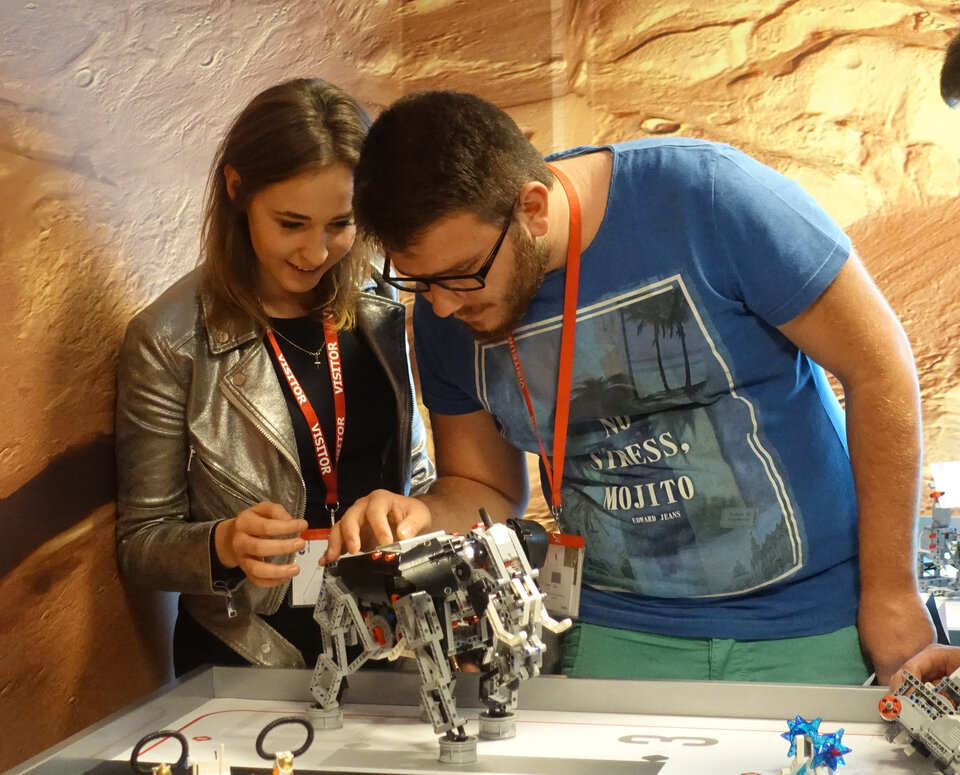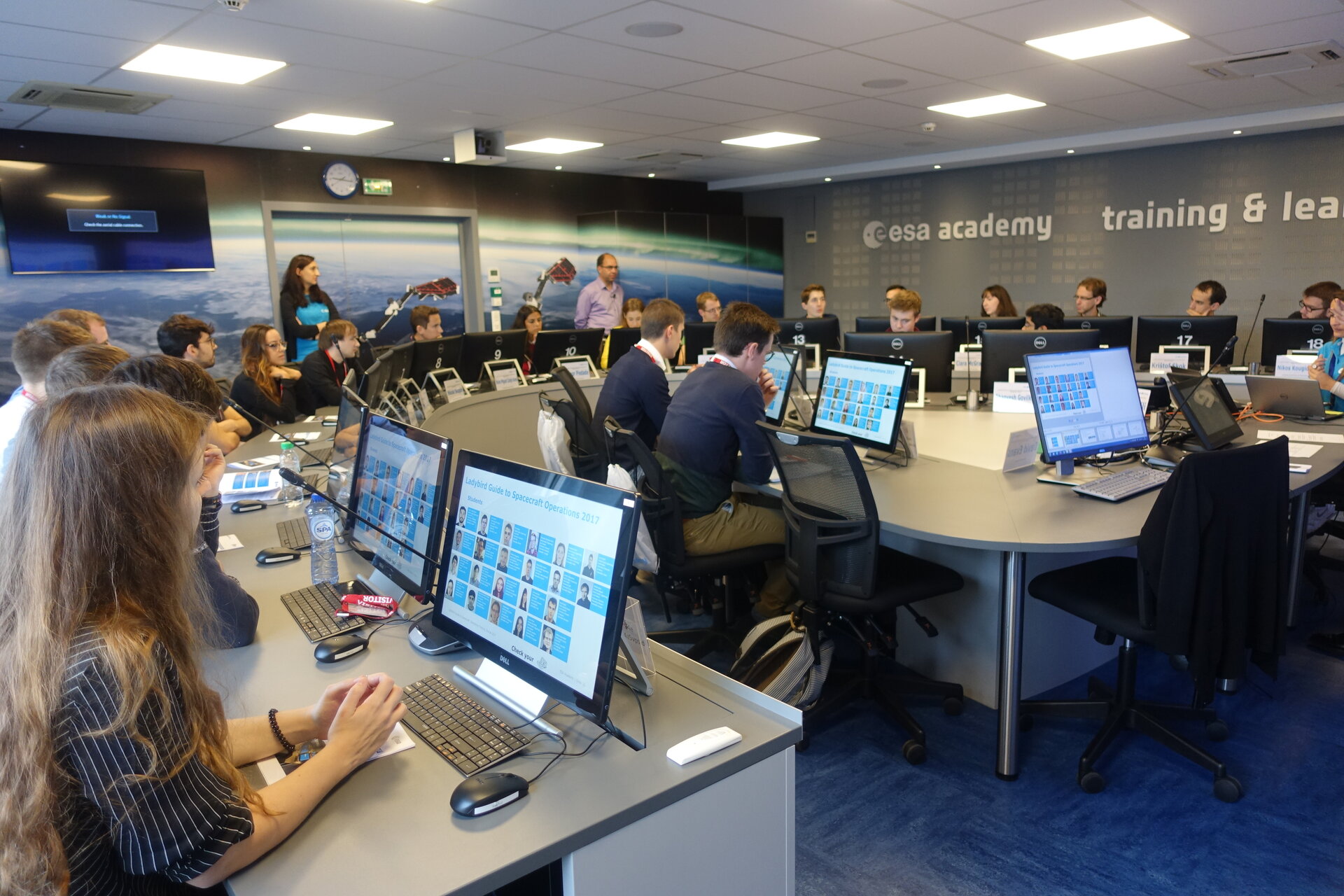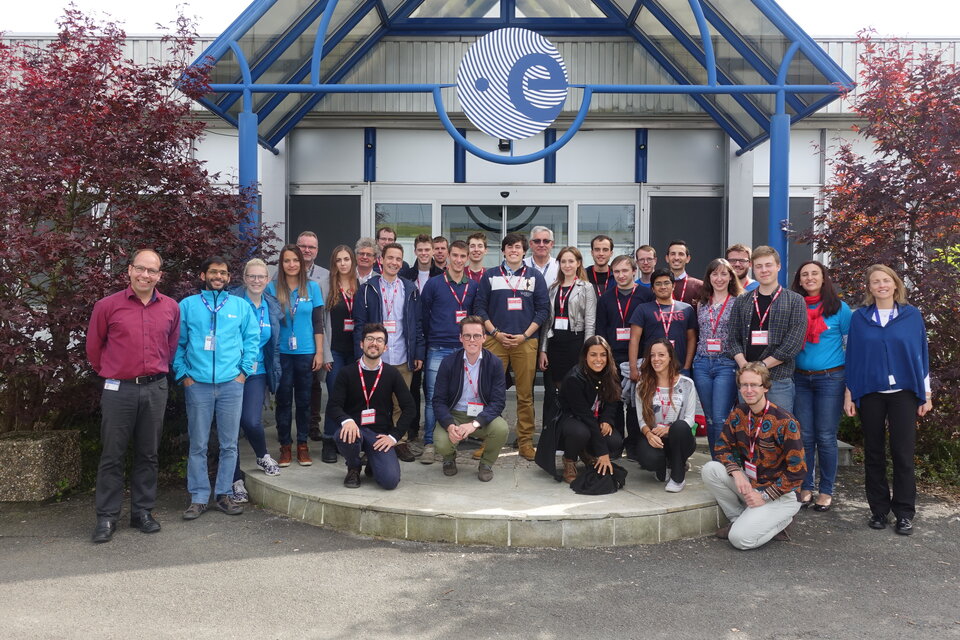Mission accomplished for the Ladybird Guide to Spacecraft Operations Course 2017
In September 2017 the second student edition of the Ladybird Guide to Spacecraft Operations training course was held at ESA Academy’s Training and Learning Centre, ESA-ESEC, in Belgium. The four-day course was designed to give an overview of how spacecraft are operated in space, and the pitfalls to be avoided during both operations and testing.
The approach of this particular course was to offer explanations in the “Ladybird style”, focusing on real-life examples and operational points of view, instead of overloading students with mathematics and technical jargon. In total, 22 university students with engineering and physics backgrounds, from 12 different ESA Member and Associate States participated. Indeed, as a British student from the University of Cambridge explained:
“For someone who has no direct experience with spacecraft operations, I found the course interesting and at a good level for me to follow without being too complex or simple. From this course I believe I have the knowledge required to begin a career related to spacecraft operations.”
During the course the following spacecraft subsystems were studied: Attitude, Determination and Control Subsystem (ADCS), Orbit Control System (OCS), Power, On Board Data Handling (OBDH), Telemetry, Telecommunication & Control (TT&C), Thermal and On Board Software (OBS).
The course was delivered by an ESA expert from the Advanced Operations Concepts Office in ESA-ESOC. He punctuated the lectures by recounting real-life scenarios where missions had encountered problems and asking the student what had gone wrong, and what could have been done to save the spacecraft. How closely did their suggestions match with what the actual scientists and engineers tried? Keep reading to find out! The ESA expert proved very popular with the students, holding their attention through the intense days and even inspiring the group to continue their discussions after the end of the sessions! As a Czech student from the Brno University of Technology puts it best: “I liked the way the lectures were delivered - learning by stories is great and really works! We learned a lot of interesting things about spacecraft operations. However, even more important and inspiring for me was the enthusiasm of the ESA trainer, which he transferred to all of us. I learned just how many things can go wrong during spacecraft operations. I am amazed how many of them work perfectly in the end - thanks to their operators. I also liked the community of international students - it is great to get to know each other and share how things are done in different countries.”

A portion of the course saw the students, divided in two teams, undertake a challenging scenario. Each day they needed to focus on the operations required for the safe and successful operations of the mission, culminating in a final problem scenario for which they needed to concoct a solution to save their satellite! The students were able to apply the concepts that they learned during the previous days and to avoid the traps that many operators fall-in. Their performance in these tasks was evaluated so that they can claim ECTS credit(s) to their universities for their participation in this training course..
As an extra bonus, the students visited the ESA-ESEC, including the Proba spacecraft’s operations room and a 4 m KA-Band Antenna and had the opportunity to exchange with ESA operation engineers. This supported what they had learned during the course with real-world applications and was very appreciated by the students, as a Spanish student from the Delft University of Technology shared: “As a bachelor student, this opportunity has helped me to expand my knowledge first-hand from professionals. The most remarkable moment was observing live from the operations room how data from the satellite Proba-V was retrieved and analysed.”
In a first for the ESA Academy, this course was livestreamed via YouTube. This allowed eight students from six different ESA Member States, who missed out on the core selection, to participate remotely. They used an online forum to submit questions to the ESA expert, and to answer them when they were posed to them. The recorded sessions could also be played back at a later time, making them useful as a revision tool. It is a pilot experience that may be replicated by ESA Education Office in the future, since the online students were very happy with their experience, as an Italian student from the University of Trieste recounted:
"Our ESA trainer was a brilliant teacher. His exposition was clear and never boring, even when dealing with the most technical subjects. His expertise and passion inspired me. This was my first time using live streams with an educational purpose. I think it is a great medium. Having the option to ‘pause a lesson’ at need or re-watch while taking notes is a game-changer."
In March 2018, a complementary training course, called Ladybird Guide to Spacecraft Communications, will be offered to another group of university students. The call for applications will be in December 2017. There are many more ESA Academy training opportunities planned for the coming year!
- To find out more please visit the Current Opportunities webpage.
- For more information about ESA Academy activities please contact: esa.academy@esa.int



